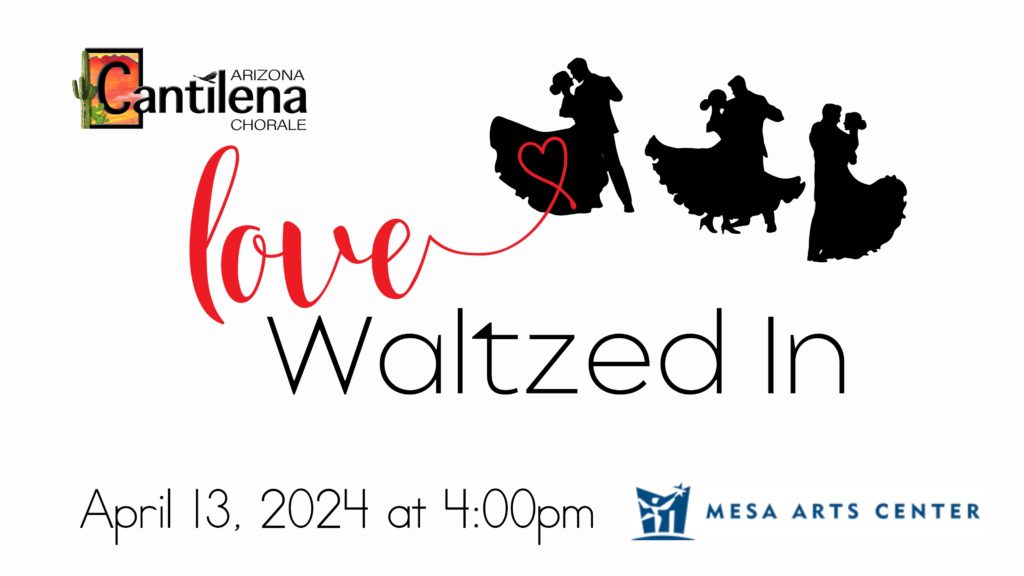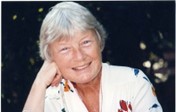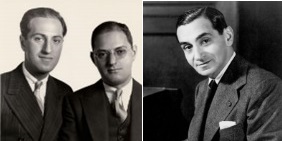
Russell Ryan – Guest Artist
Robert Mills – Principal Pianist
David Schildkret – Conductor
Sat, April 13, 2024 | 4:00 PM
Piper Repertory Theater
at the Mesa Arts Center
Love Waltzed In
I.
David C. Dickau
(b.1953)
Julius C. Miller, III
(b.1981)
Daniel E. Gawthrop
(b.1949)
II.
Johannes Brahms
(1833-1897)
Russell Ryan and Robert Mills, piano
O die Frauen
Keith Lawson, tenor; JD Lawson, baritone
Wie des Abends schöne Röte
Susan Griffin, soprano; Wendy Janzen, alto
Die grüne Hopfenranke
Susan Griffin, Wendy Janzen, Keith Lawson, JD Lawson
Wohl schön bewandt war es
Katie Lawson, alto
O wie sanft die Quelle
Susan Griffin and Julia Dane Vlach, sopranos
Wendy Janzen and Katie Lawson, altos
Keith Lawson and Russell Moon, tenors
JD Lawson and John Janzen, basses
Schlosser auf, und mache Schlösser
Vögelein durchrauscht die Luft
Julia Dane Vlach, Katie Lawson
Sieh, wie ist die Welle klar
Russell Moon, JD Lawson
Nachtigall, sie singt so schön
Julia Dane Vlach, Katie Lawson, Russell Moon, JD Lawson
Nicht wandle, mein Licht
JD Lawson
III.
Emma Lou Diemer
(b. 1927)
Aaron Copland
(1900-1990)
arr. Irving Fine
IV.
George Gershwin
(1898-1937)
and Ira Gershwin
(1896-1983)
arr. Steve Zegree
Irving Berlin
(1888-1989)
arr. Roger Emerson
V.
Fredie Mercury
(1946-1991)
arr. Roger Emerson
Lauri Wieland, soprano; JD Lawson, tenor
Billy Steinberg
(b. 1950)
and Tom Kelly
(b. 1952)
arr. Matthew Brown
John Lennon
(1940-1980)
and Paul McCartney
(b.1942)
arr. Alan Billingsley
Texts and Translations
If Music Be the Food of Love
Henry Heveningham (1651 – 1700)
If music be the food of love,
Sing on till I am fill’d with joy;
For then my list’ning soul you move
To pleasures that can never cloy.
Your eyes, your mien, your tongue declare
That you are music ev’rywhere.
Pleasures invade both eye and ear,
So fierce the transports are, they wound,
And all my senses feasted are,
Tho’ yet the treat is only sound,
Sure I must perish by your charms,
Unless you save me in your arms.
Set Me as a Seal
Song of Solomon 8:6, 7
Set me as a seal upon your heart, as a seal upon your arm; for love is strong as death.
Many waters cannot quench love, neither can the floods drown it.
Sing Me to Heaven
Jane Griner
In my heart’s sequestered chambers
lie truths stripped of poets’ gloss;
Words alone are vain and vacant,
and my heart is mute.
In response to aching silence,
memory summons half-heard voices,
And my soul finds primal eloquence,
and wraps me in song.
If you would comfort me, sing me a lullaby;
If you would win my heart, sing me a love song;
If you would mourn me and bring me to God,
sing me a requiem, sing me to Heaven.
Touch in me all love and passion,
pain and pleasure;
touch in me grief and comfort,
love and passion,
pain and pleasure.
Sing me a lullaby, a love song, a requiem
Love me, comfort me, bring me to God
Sing me a love song, sing me to Heaven.
Liebeslieder Walzer (Lovesong Waltzes), Opus 52
German texts from Polydora by Georg Friedrich Daumer (1800 – 1875)
English translations by David Schildkret
1. (Chorus) Rede, Mädchen, allzu liebes,
das mir in die Brust, die kühle,
hat geschleudert mit dem Blicke
diese wilden Glutgefühle!
Tell me, dearest girl,
how you threw my cold heart
into a wild, burning passion
with just one glance!
Willst du nicht dein Herz erweichen,
willst du, eine Überfromme,
rasten ohne traute Wonne,
oder willst du, daß ich komme?
Won’t you soften your heart?
Will you remain a chaste goddess,
giving up all bliss,
or do you want me to come to you?
Rasten ohne traute Wonne,
nicht so bitter will ich büßen.
Komme nur, du schwarzes Auge.
Komme, wenn die Sterne grüßen.
To give up all bliss—
I won’t pay such a bitter price.
So come, dark-eyed one,
come when the stars come out.
2. (Chorus) Am Gesteine rauscht die Flut,
heftig angetrieben;
wer da nicht zu seufzen weiß,
lernt es unterm Lieben.
The tide crashes against the rocks,
driven violently;
whoever does not know how to sigh
can learn it from Love.
3. (TB Duet) O die Frauen, o die Frauen,
wie sie Wonne tauen!
Wäre lang ein Mönch geworden,
wären nicht die Frauen!
O women, O women,
how they melt me with bliss!
I would have become a monk long ago
if it weren’t for women!
4. (SA Duet) Wie des Abends schöne Röte
möcht ich arme Dirne glühn,
Einem, Einem zu gefallen,
sonder Ende Wonne sprühn.
Though but a poor maiden,
I would like to glow like a lovely sunset;
if could make just one person content,
I would shimmer with bliss.
5. (Quartet) Die grüne Hopfenranke,
sie schlängelt auf der Erde hin.
Die junge, schöne Dirne,
so traurig ist ihr Sinn!
The green hopvine
trails along the ground.
The fair, young maiden—
her thoughts are so mournful!
Du höre, grüne Ranke!
Was hebst du dich nicht himmelwärts?
Du höre, schöne Dirne!
Was ist so schwer dein Herz?
Hear me, green vine!
Why don’t you lift yourself heavenwards?
Hear me, fair maiden!
Why is your heart so heavy?
Wie höbe sich die Ranke,
der keine Stütze Kraft verleiht?
Wie wäre die Dirne fröhlich,
wenn ihr das Liebste weit?
How can the vine lift itself up
without a stake to give it strength?
How can the maiden be cheerful
when her sweetheart is far away?
6. (Chorus) Ein kleiner, hübscher Vogel
nahm den Flug
zum Garten hin,
da gab es Obst genug.
Wenn ich ein hübscher,
kleiner Vogel wär,
ich säumte nicht,
ich täte so wie der.
A lovely little bird
took flight
into the garden
and took his fill of fruit.
If I were a lovely
little bird,
I wouldn’t think twice—
I would do the same thing.
Leimruten-Arglist
lauert an dem Ort;
der arme Vogel
konnte nicht mehr fort.
Wenn ich ein hübscher,
kleiner Vogel wär,
ich säumte doch,
ich täte nicht wie der.
A cunning lime-twig trap
lurked there;
the poor bird
could not escape.
If I were a lovely
little bird,
I wouldn’t think twice—
I would do the same thing.
Der Vogel kam
in eine schöne Hand,
da tat es ihm,
dem Glücklichen, nicht and.
Wenn ich ein hübscher,
kleiner Vogel wär,
ich säumte nicht,
ich täte doch wie der.
The bird landed
on a beautiful hand;
the hand didn’t harm him,
the lucky thing.
If I were a lovely
little bird,
I wouldn’t think twice—
I would do the same thing.
7. (A Solo) Wohl schön bewandt
war es vor ehe
mit meinem Leben,
mit meiner Liebe;
durch eine Wand,
ja, durch zehn Wände
erkannte mich
des Freundes Sehe.
Doch jetzo, wehe,
wenn ich dem Kalten
auch noch so dicht
vorm Auge stehe,
es merkts sein Auge,
sein Herze nicht.
Once, I was happily
contented
with my life
and with my sweetheart.
Through one wall,
yes, even through ten walls,
my beloved’s eye
would have seen me.
But now, alas,
when I’m with that cold-hearted one,
even if I stand
before his very eyes,
his eyes don’t notice me,
and neither does his heart.
8. (Chorus) Wenn so lind dein Auge mir
und so lieblich schauet,
jede letze Trübe flieht
welche mich umgrauet.
When your eyes look upon me
so gently and lovingly,
all the gloom of doubt
that frightens me lifts.
Dieser Liebe schöne Glut,
laß sie nicht verstieben!
Nimmer wird, wie ich, so treu
dich ein andrer lieben.
The lovely spark of this love—
do not let it go out!
No one else will ever be as devoted
to you as I am.
9. (Chorus) Am Donaustrande,
da steht ein Haus,
da schaut ein rosiges
Mädchen aus.
On the banks of the Danube
there stands a house,
and a rosy-cheeked girl
looks out of it.
Das Mädchen,
es ist wohl gut gehegt,
zehn eiserne Riegel
sind vor die Türe gelegt.
The girl
is very well-protected:
there are ten iron bars
in front of the door.
Zehn eiserne Riegel
das ist ein Spaß;
die spreng ich
als wären sie nur von Glas.
Ten iron bars?
That’s a joke!
I will snap them
as if they were nothing but glass.
Am Donaustrande,
da steht ein Haus,
da schaut ein rosiges
Mädchen aus.
On the banks of the Danube
there stands a house,
and a rosy-cheeked girl
looks out of it.
10. (Octet) O wie sanft die Quelle sich
durch die Wiese windet!
O wie schön, wenn Liebe sich
zu der Liebe findet!
O how gently the stream
winds through the meadow!
O how lovely it is when Love
finds Love!
11. (Chorus) Nein, es ist nicht auszukommen
mit den Leuten;
Alles wissen sie so giftig
auszudeuten.
No, there’s just no getting along
with people;
they always give the most poisonous
meaning to everything.
Bin ich heiter, hegen soll ich
lose Triebe;
bin ich still, so heißts, ich wäre
irr aus Liebe.
If I’m cheerful, they say I’m
impulsive,
if I’m calm, that means
I’m lovesick.
Nein, es ist nicht auszukommen
mit den Leuten;
Alles wissen sie so giftig
auszudeuten.
No, there’s just no getting along
with people;
they always give the most poisonous
meaning to everything.
(No. 12 follows without pause.)
12. (Chorus) Schlosser auf, und mache Schlösser,
Schlösser ohne Zahl;
denn die bösen Mäuler will ich
schließen allzumal.
Go, locksmith, and make locks,
locks without number;
so that I can shut their ugly muzzles
once and for all.
13. (SA Duet) Vögelein durchrauscht die Luft,
sucht nach einem Aste;
und das Herz, ein Herz, ein Herz begehrt’s,
wo es selig raste.
A little bird rushes through the air
searching for a branch;
and my heart desires a heart, a heart
where it can rest blissfully.
14. (TB Duet) Sieh, wie ist die Welle klar,
blickt der Mond hernieder!
Die du meine Liebe bist,
liebe du mich wieder!
See how clear the waves are
as the moon looks down!
You who are my love,
love me in return!
15. (Quartet) Nachtigall, sie singt so schön,
wenn die Sterne funkeln.
Liebe mich, geliebtes Herz,
küsse mich im Dunkeln!
The nightingale sings so beautifully
when the stars twinkle.
Love me, beloved heart,
kiss me in the dark!
16. (Chorus) Ein dunkeler Schacht ist Liebe,
ein gar zu gefährlicher Bronnen;
da fiel ich hinein, ich Armer,
kann weder hören noch sehn,
nur denken an meine Wonnen,
nur stöhnen in meinen Wehn.
Love is a dark pit,
a very dangerous well;
and I, poor man, fell into it.
I can neither hear nor see,
I can only think about my joy,
I can only moan in my woe.
17. (Chorus) Nicht wandle, mein Licht, dort außen
im Flurbereich!
Die Füße würden dir, die zarten,
zu naß, zu weich.
Do not wander, light of my life, out there
in the meadows!
Your feet, your dainty feet, would get
too wet, too delicate.
All überströmt sind dort die Wege,
die Stege dir;
so überreichlich tränte dorten
das Auge mir.
The paths there are all flooded,
and the bridges as well;
they are overflowing
with tears from my eyes.
18. (Chorus) Es bebet das Gesträuche,
gestreift hat es im Fluge
ein Vögelein.
In gleicher Art erbebet
die Seele mir, erschüttert
von Liebe, Lust und Leide,
gedenkt sie dein.
The bushes are trembling;
they were brushed by a
little bird in flight.
In the same way
my soul trembles,
overcome by love, pleasure, and sorrow,
as it thinks of you.
19. (Chorus) Nun, ihr Musen, genug!
Vergebens strebt ihr zu schildern,
wie sich Jammer und Glück
wechseln in liebender Brust.
Heilen könnet die Wunden
ihr nicht, die Amor geschlagen,
aber Linderung kommt einzig,
ihr Guten, von euch.
(Goethe, Alexis und Dora)
Now, you Muses, enough!
In vain you strive to show
how sorrow and happiness
contend in a loving breast.
You cannot heal the wounds
that Cupid inflicts;
yet, O Kindly Ones,
you alone can relieve them.
Three Madrigals
William Shakespeare (1584 – 1616)
1. O mistress mine, where are you roaming?
Oh, stay and hear! Your true love’s coming,
That can sing both high and low.
Trip no further, pretty sweeting;
Journeys end in lovers meeting,
Every wise man’s son doth know.
What is love? ’Tis not hereafter;
Present mirth hath present laughter;
What’s to come is still unsure:
In delay there lies no plenty;
Then come kiss me sweet and twenty!
Youth’s a stuff will not endure.
(Twelfth Night, Act 2, scene 3)
2. Take, oh, take those lips away
That so sweetly were forsworn;
And those eyes, the break of day,
Lights that do mislead the morn.
But my kisses bring again, bring again;
Seals of love, but sealed in vain, sealed in vain.
(Measure for Measure, Act 4, scene 1)
3. Sigh no more, ladies, sigh no more!
Men were deceivers ever,
One foot in sea and one on shore;
To one thing constant never.
Then sigh not so, but let them go,
And be you blithe and bonny,
Coverting your sounds of woe
Into hey nonny nonny!
Sing no more ditties, sing no more
Of dumps so dull and heavy!
Fraud of men was ever so,
Since summer first was leafy.
Then sigh not so, but let them go,
And be you blithe and bonny,
Converting your sounds of woe
Into hey nonny nonny!
(Much Ado About Nothing, Act 2, scene 3)
“Long Time Ago” from Old American Songs
George Pope Morris (1802 – 1864)
On the lake where droop’d the willow,
Long time ago,
Where the rock threw back the billow,
Brighter than snow;
Dwelt a maid, beloved and cherish’d,
By high and low;
But, with autumn’s leaf, she perish’d,
Long time ago!
Rock, and tree, and flowing water,
Long time ago,
Bird, and bee, and blossom taught her,
Love’s spell to know.
While to my fond words she listen’d,
Murmuring low,
Tenderly her dove eyes glisten’d,
Long time ago.
Love Walked In
Ira Gershwin (1896 – 1983)
Love walked right in and drove the shadows away;
Love walked right in and brought my sunniest day.
One magic moment and my heart seemed to know
That love said “Hello,”
Though not a word was spoken.
One look and I forgot the gloom of the past;
One look and I had found my future at last.
One look and I had found a world completely new,
When love walked in with you.
Blue Skies
Irving Berlin (1888 – 1989)
Blue skies smilin’ at me,
Nothin’ but blue skies do I see.
Bluebirds singin’ a song,
Nothin’ but bluebirds all day long.
Never saw the sun shinin’ so bright,
Never saw things goin’ so right.
Noticing in the days hurryin’ by,
When you’re in love, my! how they fly.
Blue days, all of them gone,
Nothin’ but blue skies from now on.
Somebody to Love
Freddie Mercury (1946 – 1991)
Can anybody find me somebody to love?
Each morning I get up, I die a little,
Can’t barely stand on my feet.
Take a look at yourself in the mirror and cry,
Lord, what you doin’ to me.
I’ve spent all my years believin’ you,
but I just can’t get no relief.
Lord, somebody, can anybody find me somebody to love?
I work hard every day of my life,
I work ’til I ache in my bones.
At the end of the day,
I take home my hard-earned pay
All on my own.
I get down on my knees and I start to pray
’Til the tears run down from my eyes.
Lord, somebody, can anybody find me somebody to love?
(He works hard) Every day, I try and I try and I try,
but everybody wants to put me down, they say I’m going crazy.
They say I got a lot of water in my brain,
I got no common sense. I got nobody left to believe.
Lord, somebody, can anybody find me somebody to love?
Got no feel, I got no rhythm,
I just keep losin’ my beat.
I’m OK, I’m alright,
I ain’t gonna face no defeat.
I just gotta get out of this prison cell,
Someday I’m gonna be free, Lord!
Find me somebody to love!
True Colors
Billy Steinberg (b. 1950) and Tom Kelly (b. 1952)
You with the sad eyes, don’t be discouraged.
Oh, I realize it’s hard to take courage.
In a world full of people, you can lose sight of it all,
and the darkness there inside you makes you feel so small.
But I see your true colors shining through;
I see your true colors, and that’s why I love you.
So don’t be afraid to let them show:
Your true colors are beautiful, like a rainbow.
Show me a smile then, and don’t be unhappy.
Can’t remember when I last saw you laughing.
If this world makes you crazy, and you’ve taken all you can bear,
don’t you know you can call me up because you know I’ll be there.
And I see your true colors shining through;
I see your true colors, and that’s why I love you.
So don’t be afraid to let them show:
Your true colors are beautiful, like a rainbow.
All You Need Is Love
John Lennon (1940 – 1980) and Paul McCartney (b. 1942)
Love, love, love!
There’s nothin’ you can do that can’t be done.
Nothin’ you can sing that can’t be sung.
Nothin’ you can say, but you can learn how to play the game;
It’s easy.
Nothin’ you can make that can’t be made,
No one you can save that can’t be saved.
Nothin’ you can do, but you can learn how to be you in time;
It’s easy.
All you need is love!
All you need is love, love;
Love is all you need.
Nothin’ you can know that isn’t known.
Nothin’ you can see that isn’t shown.
Nowhere you can be that isn’t where you’re meant to be;
It’s easy.
All you need is love!
All you need is love, love;
Love is all you need.
NOTES ON THE PROGRAM
by David Schildkret
From Beethoven and Schubert to Taylor Swift, from Mozart and Puccini to Lin-Manuel Miranda, every composer sooner or later deals with love, its presence or absence, its joys and its trials. Our program today presents a range of these explorations, from classic choral works to more contemporary music and popular songs.

We open with three recent pieces that have quickly entered the choral canon. “If Music Be the Food of Love” is a 2001 piece by David Dickau, a conductor, composer, and educator who spent most of his career at Minnesota State University, Mankato. This is his best-known composition. It is based on a poem by Henry Heveningham, who took his inspiration from the opening lines of Shakespeare’s Twelfth Night: “If music be the food of love, play on; / Give me excess of it, that, surfeiting, / The appetite may sicken, and so die.” While Shakespeare’s character wants so much music that he’ll grow sick of it (and therefore grow sick of love), Heveningham changes “play on” to “sing on” and takes the opposite view: “If music be the food of love, / Sing on till I am fill’d with joy.” He describes love as a pleasure “that can never cloy.”

We follow this with the short motet “Set Me as a Seal” composed by Julius C. Miller III in 2014. A singer and composer, Miller hails from Detroit and earned his degrees at Indiana University in South Bend. He has sung opera roles internationally and in the United States. His compositions are widely performed, and this piece is among his best-known. The words, from the Song of Songs in the Bible, express the permanence of love.

The set concludes with Donald Gawthrop’s 1991 composition “Sing Me to Heaven,” a beloved piece and a must for any small choir. The elegant text by the composer’s wife, Jane Griner, speaks of the many ways music can move us. In addition to music for chorus, Gawthrop has written numerous works for organ. He has been composer-in-residence to the Fairfax Virginia Symphony Orchestra and Renaissance Men, a professional vocal ensemble based in New England.

The major work on our program is the Liebeslieder Walzer(Love Song Waltzes), Opus 52, composed in 1869 by Johannes Brahms. One of the great composers of the nineteenth century, Brahms is perhaps best known today for his grand works: among them, the four symphonies and the German Requiem. But there is another, more intimate side to Brahms, found in his many songs and chamber works. The Love Song Waltzes show Brahms in a somewhat uncharacteristic lighthearted mood. While some of the songs are dark (even desolate), most are playful and charming—two words we rarely associate with the often melancholic Brahms.
The texts come from the second volume of Polydora, an extensive two-volume collection of folk poetry compiled and translated into German by Georg Friedrich Daumer. From the hundreds of poems in this 1855 collection, Brahms carefully chose the eighteen in this set and arranged them in the order we know today. Even though many of the poems logically follow one another in Brahms’s composition, only two—Numbers 13 and 14—appear together in Daumer’s book.
Brahms set himself a formidable challenge when he decided to set 18 texts by Daumer as waltzes. When the set is performed complete, as it usually is, it means 18 songs in a row in the same 3/4 OOM-pah-pah meter. What’s more, dances are typically made up of two repeated sections. With every piece in the same meter and form, there’s a serious risk of monotony! But Brahms finds remarkable variety within these limitations—so much so, that we might not even notice that the pieces have much in common.
Brahms defies expectation in the very first song of the set. Instead of repeating both the words and the tune in each section, he writes out the repeat, with different words the second time. Towards the end of the second time, he changes the harmony and piano part to make a transition into the second part of the dance, where again the repeat is written out. This repeat may be easier to hear than the first one: the tenors and basses sing the music the first time, then the sopranos and altos take it up with different words. They finally sing together in a short coda.
The most elaborate structure occurs in No. 6, “Ein kleiner, hübscher Vogel,” which resembles a minuet and trio such as might occur in the third movement of a symphony: After two repeated sections, there comes another pair of repeated sections (much shorter than the first pair), after which the first section occurs again with slightly different words. What’s more, the repetitions in the opening and closing section are written out, and while the melody is the same each time, the surrounding voices, including the piano parts, are different. If we were to use letters to stand for the sections and repetitions, the basic dance form would be AABB. But in this movement, the form is AaBbCCDDAa (upper-case letters indicate an exact repetition; lower-case indicates some significant change).
And so it goes: while 13 of the 18 songs are in the conventional form, there are just enough with significant departures sprinkled throughout to keep things interesting. The most delightful might be No. 9, “Am Donaustrande” (On the banks of the Danube) It paints a fairytale picture of a young girl locked away in a house. A young man declares that the iron bars on the door are nothing but glass to him. But by returning to the opening text at the end (the original poem doesn’t do that), Brahms implies that the young man’s boasting was in vain; the house remains barred with the girl inside. Brahms follows this with a song about a sweetly flowing river (“O wie sanft,” No. 10), perhaps to underscore the joke.
The textures are remarkably wide-ranging as well. The two pianists at one keyboard (often called “piano four hands”) provide a rich, almost orchestral sound as the voices weave melodies above. While the lower part is frequently an OOM-pa-pah bass, as we might expect, Brahms is too inventive to keep it that way for long. Similarly, the top part, rather than merely playing the same melodies as the singers, dances playfully above and around them. Listen especially in No. 3, “O die Frauen,” for the way the two pianists’ parts imitate one another in the second section to reflect the playful text. Brahms also varies the way he uses the voices: there are two solo songs and four duets. The rest are for four voices.
No. 10, “O wie ist die Welle klar,” has perhaps the most interesting texture—it is certainly the most complicated, though it sounds just as melodious and charming as all the others. In this one, the soprano and tenor parts are in canon (a round, like “Three Blind Mice”). In the first part, they are an octave apart, but in the second part, they are a seventh apart (the soprano starts a step lower than the tenor each time), which partly disguises the canon. The altos and basses do the same thing in the second part. What’s more, the pianists play the same canons, but in different octaves from the singers! Within an apparently simple song, Brahms achieves a compositional tour-de-force. This might well be said of the entire cycle.
Brahms uses one of his favorite devices to break up the monotony of the 1-2-3 rhythm. Called hemiola, it is a way of extending the meter in 3/4 time. Normally, the meter is ONE-two-three, ONE-two-three, where beat ONE is stronger than the other two. Even if we’re thinking in groups of two measures, as is frequently the case in 3/4 time, the stress will come every third beat. But Brahms often introduces a hemiola at the end of a phrase. This places the stress on every second beat: ONE-two-THREE-one-TWO-three, which changes our perception of the meter. This is used most dramatically in No. 2, “Am Gesteine rauscht di Flut,” where all the melodies are based on hemiola rhythm. The device is used with great effect in No. 8, “Wenn so lind dein Auge mir,” where each phrase ends with this elegant lengthening.
Brahms also uses changes in tempo, key, and character to vary the mood of each song. No. 2 (“Am Gesteine”) and No. 11 (“Nein, es ist nicht auszukommen”) sound like Hungarian dances. No. 6 (“Ein kleiner, hübscher Vogel”) contains a stunning change of key in the middle. The tender, decidedly Viennese-sounding No. 8 (“Wenn so lind”) follows the most desolate song of the cycle, and so on.
Finally, Brahms achieves interest and variety through text-painting—music that reflects the character of the words. The rushing tide in No. 2 (“Am Gesteine”), the birdsongs in the piano in No. 6 (“Ein kleiner, hübscher Vogel”), the fluttering of birds’ wings in No. 13 (“Vögelein durchrauscht die Luft”), and the nightingale-like long-short rhythms in both the piano and the voices in No. 15 (“Nachtigal, sie singt so schön”) are excellent examples.
On the other side of the coin, Brahms provides unity in the set mainly through the texts (though some musical material recurs briefly as well). He often pairs texts to create a dialog between numbers, and four of the songs (6, 13, 15, and 18), including the last one, refer to birds. Other nature images are water (Nos. 2, 9, 10, 11, and 14), sunset (4), the moon (14), and so on.
We’re adding a further element of variety in our performance. The Liebeslieder Walzer were originally meant as salon music—a pastime for an intimate gathering of friends around a piano. They were quickly presented in larger concert settings, and they are often performed by choirs, even though Brahms most likely intended them to be sung by four soloists. In fact, he may have offered the possibility of performing them without singers at all! The title page of the first edition describes these as pieces “für das Pianoforte zu vier Händen (und Gesang ad libitum)” (for the piano, four hands, and singing ad libitum). Whether he meant that the voices are optional or that the vocal parts could be sung by either four singers or a larger group is somewhat unclear. Noting the ambiguity, choirs frequently sing these pieces—even using a whole section to sing the movements for one part. To preserve the chamber music aspect of the original and to vary the texture, we are performing about half the movements with the full choir and the rest with smaller groups.
As is traditional, we have appended the final song from the second set of Liebeslieder Walzer, Opus 65, to the end of the set. The text for this movement is the last four lines from a long poem by Goethe, which Brahms fittingly labels “Zum Schluss” (At the End, or In Conclusion). Only five years separate these Neue Liebeslieder Walzer (New Love Song Waltzes), composed in 1874, from the first set, yet the style is noticeably different: the vocal parts are more complicated, and the overall tone is more contemplative. Still, it makes a satisfying ending to the work as a whole.

Like the Liebeslieder Walzer, Emma Lou Diemer’s Three Madrigals are based on disparate texts carefully chosen by the composer, in this case to create a story arc. Diemer, a composer and organist, spent most of her career teaching composition at University of California at Santa Barbara. From 1959 – 1961, she was composer-in-residence under a Ford Foundation Young Composers Project grant in the schools in Arlington, Virginia. It was during this period that she wrote Three Madrigals, showing her gift for writing music that is both practical and satisfying. In the first song, the speaker tells a young woman that “youth’s a stuff [that] will not endure.” Therefore, rather than running off, she should stay to be kissed. By the second song, love has already gone wrong, but the third song encourages her to “sigh no more,” since men have always been liars. “Let them go!” the text says, as if to declare, “they’re not worth it.”

Aaron Copland’s two sets of Old American Songs are an eclectic collection of everything from folk songs to campaign songs and minstrel songs to sentimental ballads like the one we’re singing today, “Long Time Ago.” Copland originally intended the songs to be performed by a solo singer with piano. Later, he orchestrated them, and eventually, several of his younger contemporaries arranged them for choirs. The setting of “Long Time Ago” is especially effective in this guise. Copland has provided a new piano accompaniment for a song originally published in 1839. The words (originally “Near the lake”) were written by the American newspaper editor and poet George P. Morris (1802 – 1864), and the music was composed by Charles E. Horn (1786 – 1849). Horn was born in England but made a successful career in the United States. Among his achievements was helping to found the New York Philharmonic in 1842.

Next, we present two songs from what is popularly known as The Great America Songbook—standards from the twentieth century that continually find new audiences. Originally from Tin Pan Alley, Broadway, and Hollywood, these songs remain favorites with performers of all kinds, from jazz to pop artists. “Love Walked In” by the Gershwin brothers was first heard in The Goldwyn Follies of 1938, though George Gershwin had written the melody in 1930. Berlin wrote “Blue Skies” in 1926 as a last-minute addition to the Broadway musical Betsy by Rodgers and Hart. Al Jolson sang it in the first sound film, “The Jazz Singer” (1929), and Bing Crosby sang it in the film “White Christmas” (1954).



Our concert concludes with three more current popular songs. “Somebody to Love” is a beloved Freddie Mercury song from 1976. “True Colors” was first sung by Cyndi Lauper and released in 1986. Finally, the Beatles remind us that “All You Need is Love” in their single from 1967.
We hope our performance today brings you both “present mirth” and “present laughter” and that all your “journeys end in lovers meeting” and “pleasures that can never cloy”!
Donor Recognition
We humbly recognize all the individuals, businesses, foundations and government agencies that have played a large role in allowing Arizona Cantilena Chorale to look toward an exciting future of engaging, enriching and inspiring our audiences with beautiful music.
The list below includes supporters who have contributed financially to date since January 1, 2023. Please consider joining this honored list and donate online at www.AZCanti.org
BENEFACTOR ($10,000+)
Otto & Edna Neely Foundation
Lorraine Tschaeche
SPONSOR ($5,000-$9,999)
PATRON ($2,500-$4,999)
Tom & Louise Oliver
SUSTAINER ($1,000-$2,499)
Jack & Elisa Bartlett
Robert & Paula Beck
Richard & Joyce Fox
Virg & Donna Heusinkveld
Keith & Nan Lawson
Claudio & Marlynn Rey
Robert & Pauline Smith
Michael & Julia Vlach
David & Pamela Watson
FRIEND ($100-$999)
Jonathan & Harriet Askew
Les & Pat Bartlett
Kay Block
Ken & Hildie Brooks
Ken & Nancy Bucy
Jerry & Margaret Buza
Paul & Maureen Buza
Eugene & Paula Dahl
Ann Marie Foley
Kathleen Foley
Giselle Fox
James & Diane Gardiner
Betty Hiett
Sam & Jenny Kao
Monica Lesperance
Claudia McNiff
Richard & Susan Oliver
Kenneth & Gay Rhoades
Helen Robles
David Seaman
Gene Barnes & Karen Spencer-Barnes
Brad & Melanee Tiffany
Joel & Cheryl Wallace
Robert & Linda West
Tammy White

